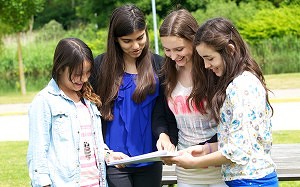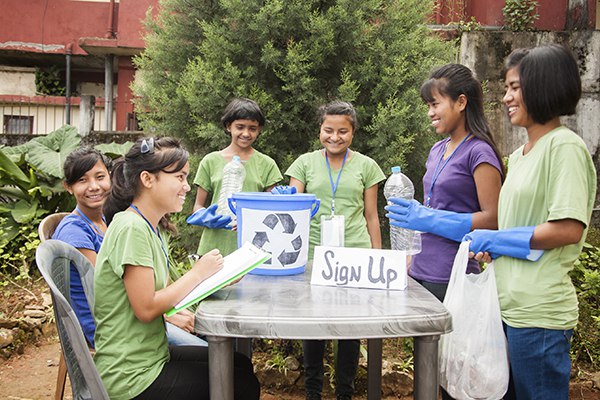The community project encourages students to explore their right and responsibility to implement service as action in the community. As Middle Years Programme (MYP) educators implement the project, here’s some educator feedback on how it can make a difference to students, teachers, schools and communities.
 “From the moment [the MYP community project] was introduced, the possibility of doing something to help their new community resonated with students. Early in the year, one student asked me if he was actually going to be able to do the service action, “or are we just going to, you know, sit in class and talk about it?” Giving them the opportunity to do something meaningful, to actually have an impact on the world, is profoundly important to them. This makes it exciting.”–Tim Nolan, teacher and Project Leader, Wesley at Clunes, Victoria, Australia.
“From the moment [the MYP community project] was introduced, the possibility of doing something to help their new community resonated with students. Early in the year, one student asked me if he was actually going to be able to do the service action, “or are we just going to, you know, sit in class and talk about it?” Giving them the opportunity to do something meaningful, to actually have an impact on the world, is profoundly important to them. This makes it exciting.”–Tim Nolan, teacher and Project Leader, Wesley at Clunes, Victoria, Australia.
 “At the end of the community project process, we had an exhibition, similar to the personal project exhibition. It was excellent to see the range of student accomplishments, from working with local charities to advocacy. Soon, those same students will be introduced to the MYP year 5 personal project. As the objectives and elements of the process are similar, half our work is already done! I would highly recommend implementing the community project if you have the choice. It really gave our students a sense of energy and enthusiasm for learning!”–Jeremy Otto, MYP Coordinator, Victoria Shanghai Academy, Hong Kong.
“At the end of the community project process, we had an exhibition, similar to the personal project exhibition. It was excellent to see the range of student accomplishments, from working with local charities to advocacy. Soon, those same students will be introduced to the MYP year 5 personal project. As the objectives and elements of the process are similar, half our work is already done! I would highly recommend implementing the community project if you have the choice. It really gave our students a sense of energy and enthusiasm for learning!”–Jeremy Otto, MYP Coordinator, Victoria Shanghai Academy, Hong Kong.
“I’ve just allocated our 100th community project this year. In Clunes, that equals one community project for every ten people in town, in just three terms. Of course, like many statistics, this one is a little misleading, in that not all projects are directed at the local town. However, the ratio effectively highlights the opportunity and capacity we have to connect with and make a difference to our local community.”–Tim Nolan, teacher and Project Leader, Wesley at Clunes, Victoria, Australia.
 “For future sustainability, we have co-ordinated with the CAS coordinator and the Diploma Programme (DP) coordinator because we want student knowledge to cascade into all areas of school life and future project work. This is in order to create sustainable activities which can continue to benefit our local community of Hong Kong.”–Anne-Marie Kelly, MYP Projects Co-ordinator and Head of Year 10, Victoria Shanghai Academy, Hong Kong.
“For future sustainability, we have co-ordinated with the CAS coordinator and the Diploma Programme (DP) coordinator because we want student knowledge to cascade into all areas of school life and future project work. This is in order to create sustainable activities which can continue to benefit our local community of Hong Kong.”–Anne-Marie Kelly, MYP Projects Co-ordinator and Head of Year 10, Victoria Shanghai Academy, Hong Kong.
“Introducing the MYP community project has been a part of a slight shift in how we connect with the community. It has broadened our sense of partnership with the people, organisations and communities within and around our campus […] I sometimes wonder if it is fair to expect people in the community to accept some responsibility for educating our students? Isn’t that our job? I know that the benefits to the students are huge, and that the students are eager to be seen, valued and to take on the challenges of “real work”, but rather than feeling as if I am dumping my students on someone else, hoping that I’ve prepared the students well enough and that they will manage to give back something of greater or equal value, I find that my sense of connection and responsibility is growing wider. My perception of my role as a teacher has broadened a little to encompass my role as a member of my community, supporting those who in turn support our students.”–Tim Nolan, teacher and Project Leader at Wesley at Clunes, Victoria, Australia.
Find out more about MYP projects.
Schools and educators who would like to submit an article for the IB blog can get in touch with us by emailing: communications@ibo.org
